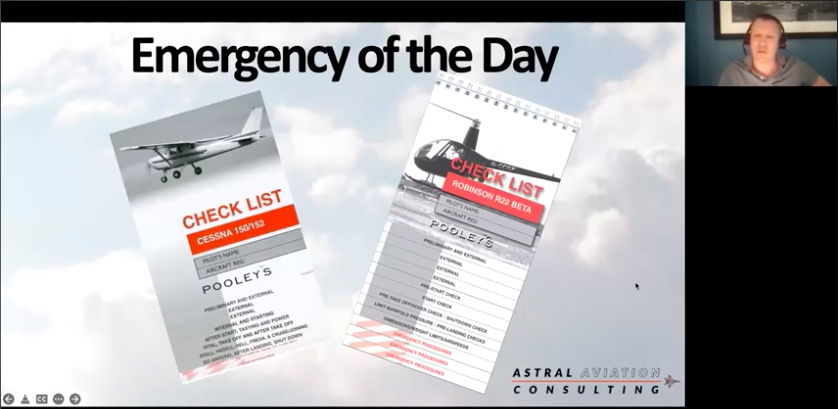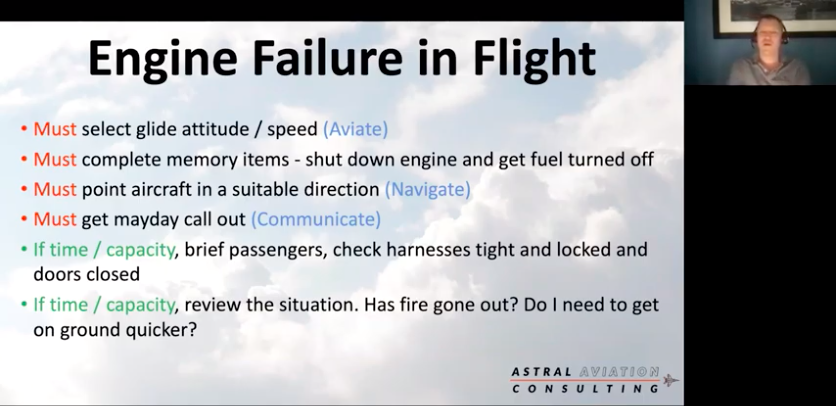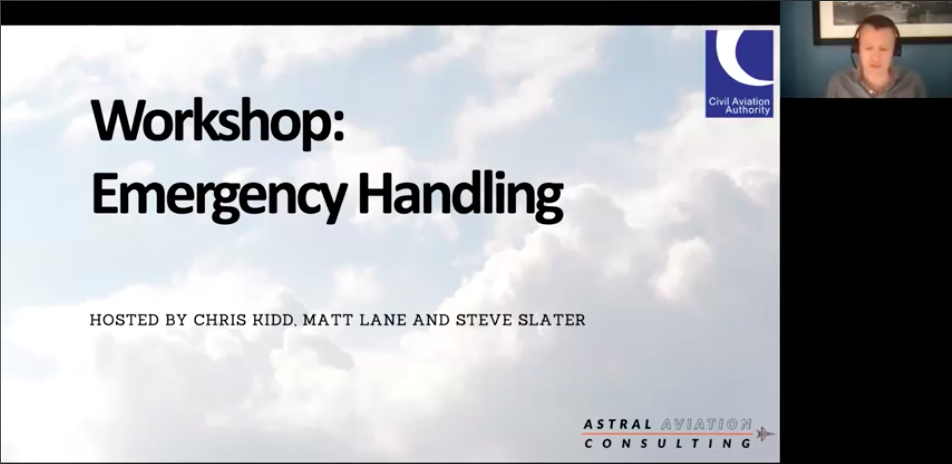Emergency Handling Workshop – Steven Slater (CEO of the Light Aircraft Association), Chris Kidd and Matt Lane.
Written by The Proficient Airman, Mubashar Yasin.
This session will provide an insight on how to handle emergencies – with speakers Steven Slater, Chris Kidd and Matt lane covering the session. It was a fantastic session that gave me the confidence and tools to handle emergencies whilst remaining calm under pressure, leading by example and making effective decisions for a positive outcome.




Time sensitive emergencies (TSE)
First, the most important step is to pause and diagnose – don’t panic and react out of haste. Once you believe you have diagnosed the issue – communicate to ATC who will be able to assist you further.
This is the type of emergency if not acted quickly – can lead to a catastrophic incident. This is where you refer to your ‘memory items’ that requires a quick, prompt response.
An example of TSE include:
- Engine failure
- Engine mechanical failure
- Engine fire
- Fire in cockpit
- Smoke/fumes
- Fuel leak
- And more….
Non time sensitive emergencies (NTSE)
Here it is important to react with good judgement – however if not reacted quickly then the likelihood of catastrophic incident is low.
An example of a NTSE include:
- Electrical failure
- Radio failure
- Flap failure
- Undercarriage failure
Emergency of the Day
- Create an ‘Emergency of the Day’ roleplay incidents.
- There are a handful of emergencies at the back of your checklist. However, these are often disregarded until they are required in an emergency situation. It is good practise to refer to these once or twice a week. By becoming familiar to this – you will already be prepared to respond quickly without having to refer to the checklist and reading word for word.
What to do in the event an emergency incident occurs in the cockpit (during a solo flight)?
- Aviate
- Flying the airplane throughout the incident. This should be your first, main priority.
- Navigate
- Point the aircraft in a sensible direction – i.e. lining towards the fields and in headwind.
- Remember the five S when selecting the best landing site.
The five S’s:
- Slope
- Size
- Shape
- Surface
- Surroundings
- Communicate
- Communicate a mayday or pan call.
- Assess the situation again – ensure you feel in control throughout the whole of the emergency
When communicating to ATC include the following:
Aircraft call sign,
Aircraft type,
Nature of emergency,
Intentions,
Position, altitude, heading,
Relevant information.
What is DODAR in an emergency?
- Diagnose. (problem).
- Options (hold, divert, immediate land).
- Decide (on option).
- Act or assign (action based response).
- Review (in event of new information – review and adapt).
This concept involves the idea of reviewing and deciding the steps you will take in an emergency and acting quickly. Remember in an engine failure – every second counts. It will be 25 seconds before you are on the ground from 1,200ft – so remain calm under pressure and act quickly and effectively.

The decision tree
The decision tree revolves around 3 main types of engine malfunctions and what to do in these scenarios – whether or not to restart the engine. Here is the general decisions to take depending on the failure:
Mechanical failure – no restart.
Non-mechanical failure – attempt restart.
Fire – No restart.
Resource management
- Who else can help you in the emergency – utilise all your resources.
- Be clear who is in control and what task is being assigned to who.
- Utilise the ATC.
- Family and friends – some of who might be pilots or experienced flyers.
- Checklist and guides.
Take-away points for me
The big take-away points for me are as follows:
- Emergency of the Day – this is a great initiative to become familiar with emergency situations through practising scenarios on a weekly basis to remain ‘current’ and respond quickly as and when challenges arise.
- DODAR – this is a technique reinforced in your mind that should give you direction and guidance to tackle a challenging scenario. I think this is a fantastic step-by-step approach to analyse, decide and review the situation. This is something I will keep in mind when beginning my training.
- Characterising time-sensitive and non time-sensitive emergencies and the checklist associated with each.
Having attended this webinar it was a great opportunity to understand how to approach an emergency situation. Steven Slater also gave an insight into his experience when the crankshaft failed whilst flying the tipsy aircraft. He related to the five S when choosing the appropriate landing spot and ensuring to land in headwind. Ultimately, this led to a successful landing. Good practise like these are indispensable when incorporating into your flying in order to become a successful airman and airwoman.
Happy flying.
